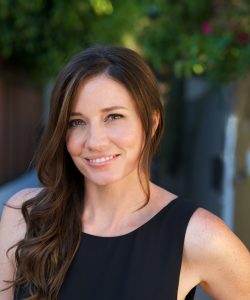THE MOST controversial item to come out of Tumblr this week is blogger centrumlumina’s “census” of Archive of Our Own (also known as AO3), a popular website for hosting fanfiction. Fanfiction, for the uninitiated, is fiction about fiction. Writers use AO3 to publish stories based on their favorite films, television shows, and books. It’s a bustling, thriving site full of incredible, imaginative writing – but, as centrumlumina’s report demonstrates, there is some very obvious trouble in paradise.
Put simply, the vast majority of stories on AO3 focus on male characters. Specifically, they focus on white male characters kissing other white male characters. While there is a lot to celebrate about fans bending their favorite works to create much-needed queer representation, it’s frustrating to see so little fanwork dedicated to queer women and queer characters of color.
Now, one thing that the census doesn’t take into account is an online fan adage known as Rule 63: for every male character, there exists a female counterpart. AO3 contains thousands upon thousands of stories where iconic male characters like Sherlock Holmes, Captain America, Harry Potter are re-imagined as women. In some ways, this phenomenon is encouraging. Young women are claiming boys’ narratives for themselves, and reading their own experiences into the characters they love. But it’s also a sad reflection on a mainstream media landscape which, frankly, doesn’t provide girls with many well-written women. Even less common are well-written relationships between women. In most blockbusters, female characters, if they exist at all, don’t speak to one another. They don’t forge friendships. Not exactly ripe fodder for fannish imaginations.
All that said, there is building excitement about some of the whispers coming out of Lucasfilm these days. Next December’s Star Wars: Episode VII is virtually guaranteed to be a massive hit. Since the original 1977 film, the Star Wars franchise has grossed a combined six hundred million dollars, making it the fifth highest-earning franchise in cinematic history. Episode VII could be an hour and a half of Jar-Jar Binks blinking and it still would make a billion dollars. Few film franchises have that kind of insurance.
Which is why it’s so impressive that director J.J. Abrams and his production staff have prioritized diversity in their casting. John Boyega, a British actor of Nigerian origin best known for cult film Attack the Block, beat out countless much more famous white actors for the film’s leading role. If Episode VII nets more than $800 million, it will surpass Independence Day to become the highest-grossing film in history to feature a character of color in a starring role. A worldwide open casting call for an unspecified female role resulted in the casting of a completely unknown British actress of color, Crystal Clarke who beat out 37,000 other women for the part. Joining Boyega and Clarke in the cast are other actors of color: Oscar Isaac, Lupita Nyong’o, and Christina Chong. This is, quite possibly, the most racially diverse cast of any major blockbuster ever made.
But the encouraging news doesn’t end there. The Star Wars fan blogosphere is rife with rumors that Game of Thrones actress Gwendoline Christie’s role in the film was originally written for a man.
When Disney announced the film’s principal actors in late April, many commentators noted that only one of the names listed belonged to a woman. Daisy Ridley, a little-known young British actress, was to join veteran actress Carrie Fisher in carrying the franchise forward into a new era. And… that was it. For a short, scary while, it appeared as though the franchise was set to fall into the trap of One Important Female Character Per Trilogy.
In the weeks following that initial casting announcement, Disney announced that Gwendoline Christie, Lupita Nyong’o, and Christina Chong had been cast in unspecified roles. Feminist nerds everywhere breathed a sigh of relief. And then fans started doing a little digging.
See, for months following the initial casting announcement, A-lister Benedict Cumberbatch had reportedly been in talks with J.J. Abrams. Certain sources assured industry publications that his hiring was a done deal. When the cast list was released, and his name was absent, bewilderment rippled through the internet? Where was Cumberbatch? What happened?
According to film blogger Devin Faraci, Cumberbatch was originally slated to play a villainous imperial officer tasked with hunting down Boyega and Ridley. It is now being reported that Gwendoline Christie will be playing – surprise, surprise – a commanding Storm Trooper traversing the galaxy to locate Boyega after he deserts the Troopers.
Cumberbatch, it seems, has been thoroughly Rule 63’d.
As a kid who grew up identifying as female and obsessing over Star Wars, I often felt profoundly alienated by what I saw onscreen. I dressed up as Padmé Amidala for Halloween when I was six years old, and watched with increasing dismay as, over the course of the next few years, she was largely reduced to a background character in the epic tale of Anakin’s angst.
I discovered the original trilogy when I was older and, again, I felt deeply disappointed by the narrative’s glaring lack of women. Princess Leia was a remarkably progressive female character, independent and adventurous and spirited, but all the pluck in the world can’t erase those scenes in Return of the Jedi where she lounges around in a barely-there bikini and chains. The message was loud and clear: women are love interests, and women are for sex. A girl Jedi knight? Forget it.
I often wished Luke Skywalker and Han Solo had been written as girls, just as I wished for Harriet Potter and Shirley Holmes. I’ve spent my whole life waiting for stories where girls are adventurers in their own right. Now, in the era of The Hunger Games, Game of Thrones, and Episode VII, I feel we’re closer than ever to a world where six-year-old Beth’s vision is twenty-year-old Beth’s reality.










-300x169.jpg)






